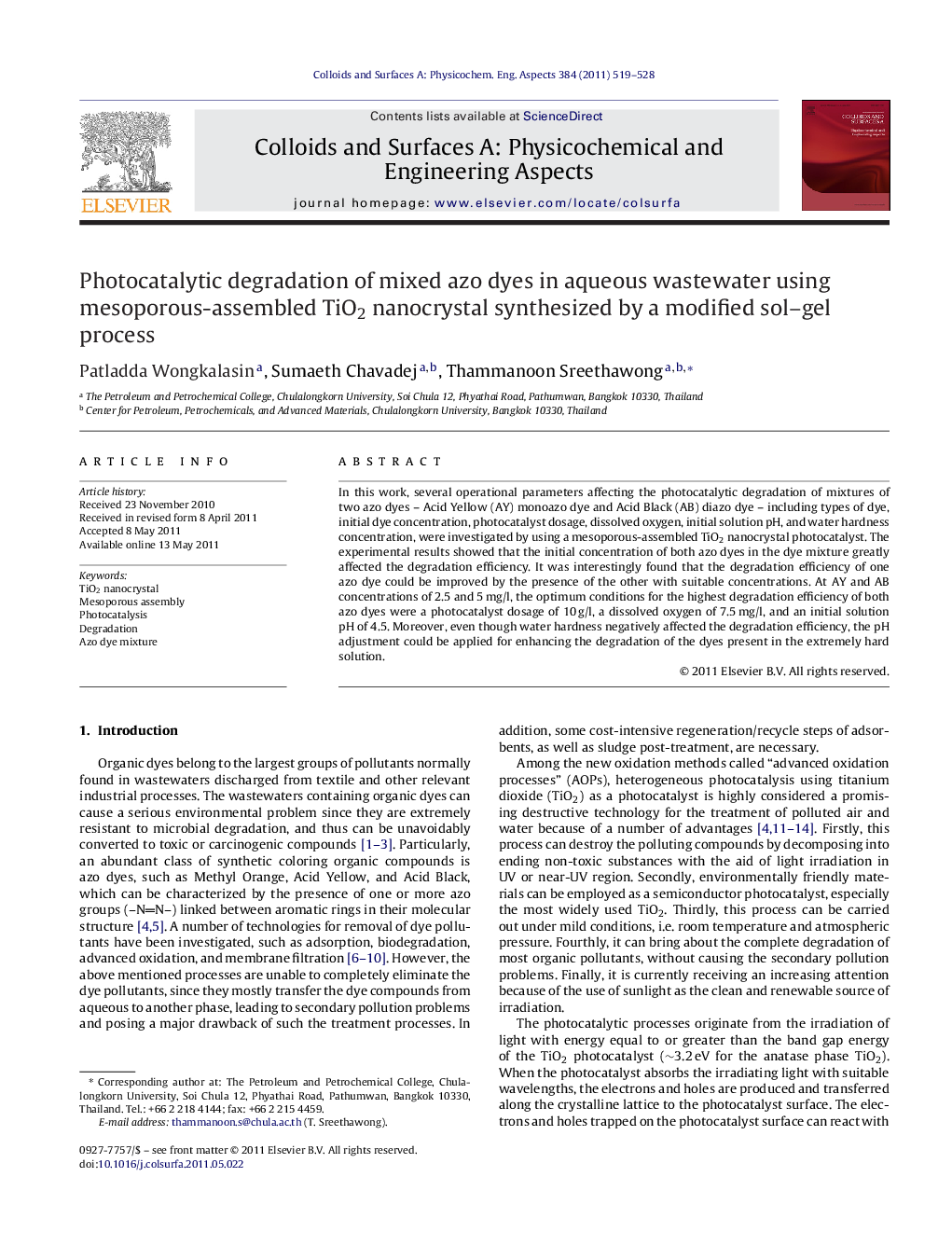| Article ID | Journal | Published Year | Pages | File Type |
|---|---|---|---|---|
| 594689 | Colloids and Surfaces A: Physicochemical and Engineering Aspects | 2011 | 10 Pages |
In this work, several operational parameters affecting the photocatalytic degradation of mixtures of two azo dyes – Acid Yellow (AY) monoazo dye and Acid Black (AB) diazo dye – including types of dye, initial dye concentration, photocatalyst dosage, dissolved oxygen, initial solution pH, and water hardness concentration, were investigated by using a mesoporous-assembled TiO2 nanocrystal photocatalyst. The experimental results showed that the initial concentration of both azo dyes in the dye mixture greatly affected the degradation efficiency. It was interestingly found that the degradation efficiency of one azo dye could be improved by the presence of the other with suitable concentrations. At AY and AB concentrations of 2.5 and 5 mg/l, the optimum conditions for the highest degradation efficiency of both azo dyes were a photocatalyst dosage of 10 g/l, a dissolved oxygen of 7.5 mg/l, and an initial solution pH of 4.5. Moreover, even though water hardness negatively affected the degradation efficiency, the pH adjustment could be applied for enhancing the degradation of the dyes present in the extremely hard solution.
Graphical abstractFigure optionsDownload full-size imageDownload as PowerPoint slideHighlights► Mesoporous-assembled TiO2 nanocrystal was employed for photocatalytic degradation of mixed azo dyes. ► The degradation efficiency of one azo dye was improved by the presence of the other dye with suitable concentrations. ► The photocatalyst dosage, dissolved oxygen, and initial solution pH were optimized for mixed dye degradation. ► The pH adjustment was, for the first time, successfully applied for enhancing degradation of mixed dyes present in extremely hard aqueous wastewater.
